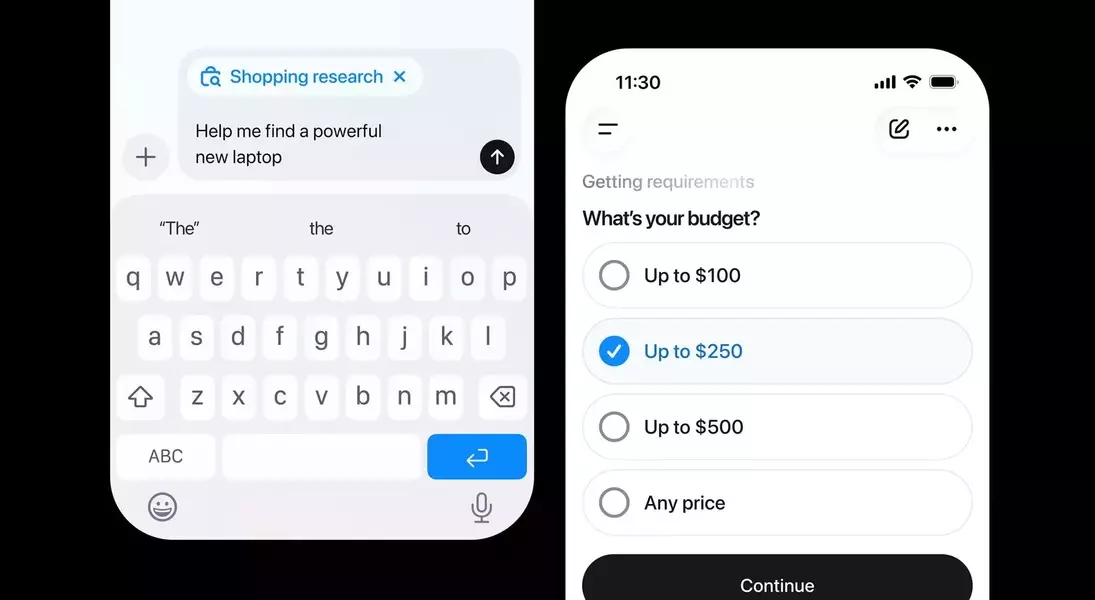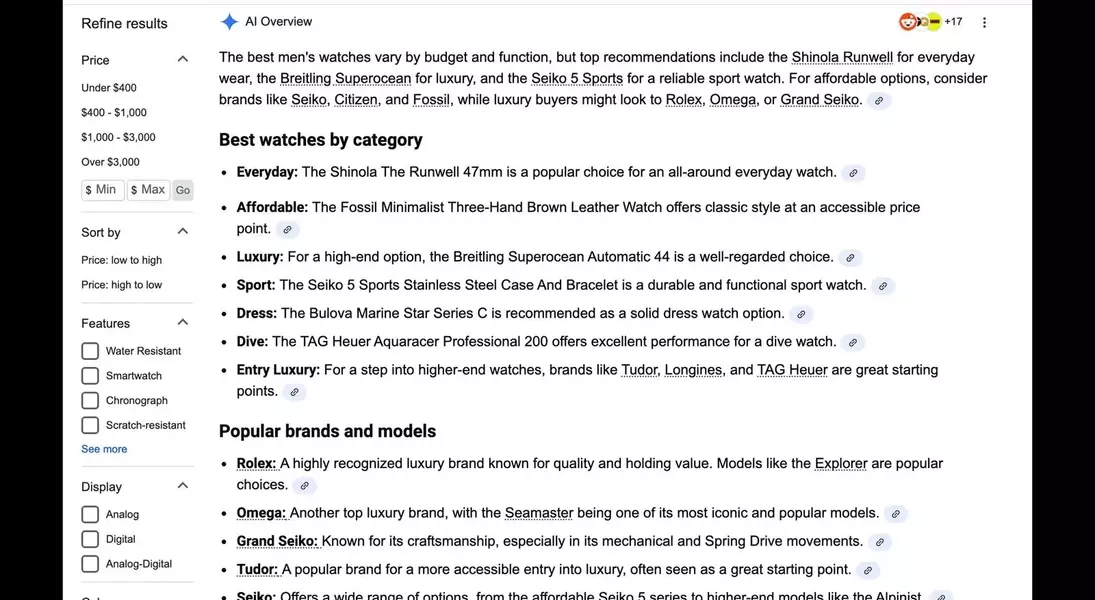




Embrace the Future: AI-Powered Shopping Redefines Retail During Peak Season
AI Integrates into the Holiday Shopping Experience
As the festive purchasing period arrives, artificial intelligence platforms are stepping into a pivotal role, fundamentally altering how consumers discover and acquire products. Recent advancements, such as OpenAI's debut of a 'shopping research' function within ChatGPT, guide users through tailored buying recommendations based on their preferences, budgets, and specific usage requirements. This innovation coincides with Google's release of enhanced shopping functionalities within its AI Mode, powered by the sophisticated Gemini 3 model. These developments mark a significant leap, moving beyond conventional search to offer a highly customized shopping expedition just in time for major sales events like Black Friday.
The Power of Advanced AI Models in Consumer Retail
Technology companies assert that their refined AI models are now capable of delivering exceptionally personalized advice. This includes recommendations deeply rooted in individual browsing histories and precise sizing suggestions derived from a vast analysis of product reviews and brand interactions. This evolution necessitates a new focus for brands: 'AI optimization' (AIO). Marketing teams are proactively adjusting their strategies to align with these AI-driven changes, recognizing the increasing importance of detailed product content and diverse digital assets. The upcoming holiday season will serve as a crucial test for these efforts, with the expectation that streamlined AI shopping paths will boost conversion rates by minimizing interruptions in the consumer's purchasing process.
Initial Industry Reception and Adoption Trends
The swift introduction of commerce-centric AI updates is already yielding positive results, with early data indicating a surge in consumer engagement. Referrals from AI engines like ChatGPT and Perplexity to prominent e-commerce sites witnessed a substantial increase in October 2025 compared to the previous year. However, despite this growth, AI-driven traffic remains a small fraction of overall organic e-commerce visits, with traditional search engines still accounting for the vast majority. Experts note that even conventional search platforms are incorporating AI features, such as Google's expanded AI overviews for apparel-related searches, creating a more integrated shopping experience that subtly introduces users to AI assistance.
Seamless AI Integration in Everyday Search
An exemplary demonstration of AI's subtle integration into the shopping journey is observed when searching for items like a holiday dress. Google now provides AI-generated responses to common queries, displays product grids reminiscent of major online retailers, and offers a dedicated panel for its 'ask me anything' AI mode. This strategic blending of AI into regular search interfaces allows consumers to engage with advanced technology without explicitly realizing it, making the process feel natural and intuitive. This approach ensures that users benefit from AI's capabilities in product discovery and information retrieval, enhancing their overall shopping experience.
Strategic Brand Adaptation to the AI Shopping Era
Advocates of AI shopping tools highlight their potential to act as personal buying assistants, quickly and accurately connecting consumers with desired products. This efficiency is expected to lead to higher conversion rates and fewer returns. Data suggests that consumers are particularly drawn to AI for finding the best deals and discovering new products. Given that major sales events are often driven by discounts, AI's ability to rapidly identify cheaper alternatives could significantly influence overall sales outcomes, outperforming traditional search methods in speed and relevance. Brands are therefore encouraged to enrich their product descriptions with comprehensive details, including fabric composition, origin, sizing, and FAQ-style content that anticipates consumer questions. Regularly updating this information allows brands to align with seasonal trends and conversational AI queries.
The Resurgence of Detailed Content for AI Search
The rise of AI search is bringing renewed importance to comprehensive content, including FAQs, which had previously diminished in significance within traditional SEO. With 'agentic search,' preemptively addressing customer inquiries has become paramount. E-commerce directors are re-evaluating content strategies, shifting from brevity to a focus on context, clarity, and depth. This involves more frequent updates to product content and a re-imagining of site structures to keep pace with the dynamic changes in AI search algorithms. Brands that invest in rich, detailed information will be better positioned for visibility and engagement within the evolving AI-powered search ecosystem.
Analyzing AI's Impact on Sales and Search Behavior
As commerce-focused AI updates are still relatively new, brands are just beginning to collect data on how their AI optimization efforts are affecting sales. The upcoming holiday shopping period is anticipated to provide the first substantial dataset for analysis. Initial observations from platforms like Google indicate that the introduction of AI overviews has led to an increase in search queries, particularly longer, more complex ones. This suggests that AI is making it easier for consumers to find what they need, ultimately improving user satisfaction and engagement. The ability of AI to better match individuals with relevant products underscores its potential to become an indispensable tool in the retail sector.
The Dawn of Visual Search and Multimodal AI
A crucial element of AI search is its multimodal capability, allowing models to interpret various forms of input, including voice, images, and video. This feature is particularly popular among younger generations, with a significant percentage of Gen Z initiating searches using visual tools like Google Lens. The exponential growth in the use of Google Lens, especially since its integration with AI search, highlights a profound shift towards visual discovery. For visually-driven industries such as fashion and beauty, this presents an unprecedented opportunity to create immersive and personalized online experiences, leveraging rich visual content to engage consumers in novel ways.
Preserving Brand Experience in an AI-Driven Landscape
Luxury brands, in particular, face the challenge of maintaining their meticulously crafted shopping experiences as AI engines increasingly mediate the consumer journey from discovery to purchase. Many are responding by investing in AI-powered website enhancements, including proprietary AI search functionalities and interactive visuals, to transform their direct-to-consumer platforms into engaging digital destinations. Experts suggest that optimizing creative campaigns for AI visibility, beyond traditional engagement metrics, is crucial. This means that the visual content and the conversations generated around campaigns on social media and through AI interactions will significantly impact brand visibility and resonance in this new AI-driven marketing era.
